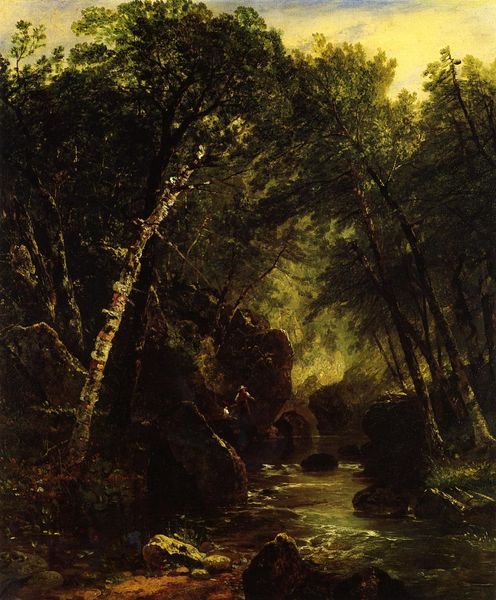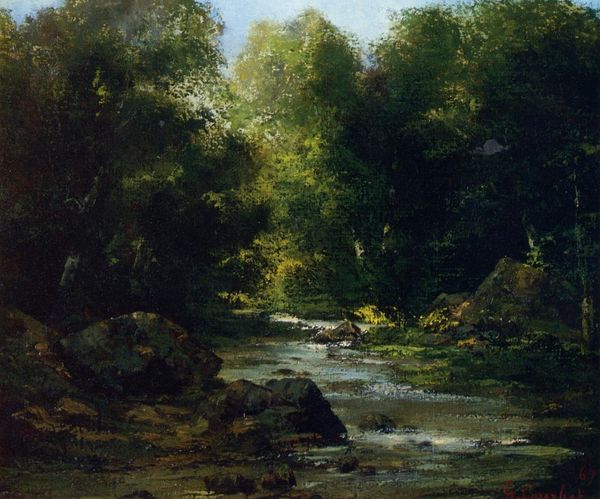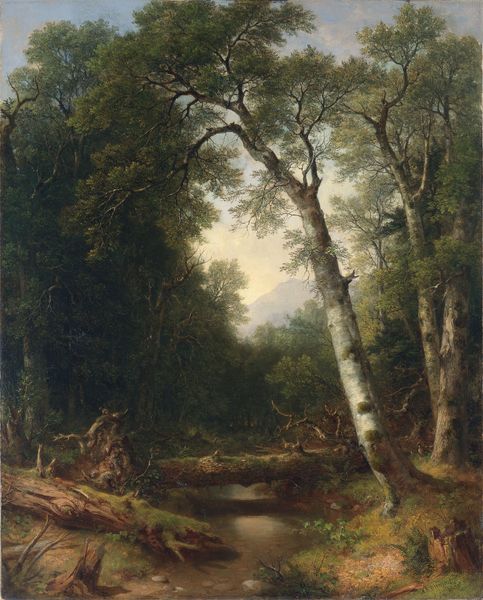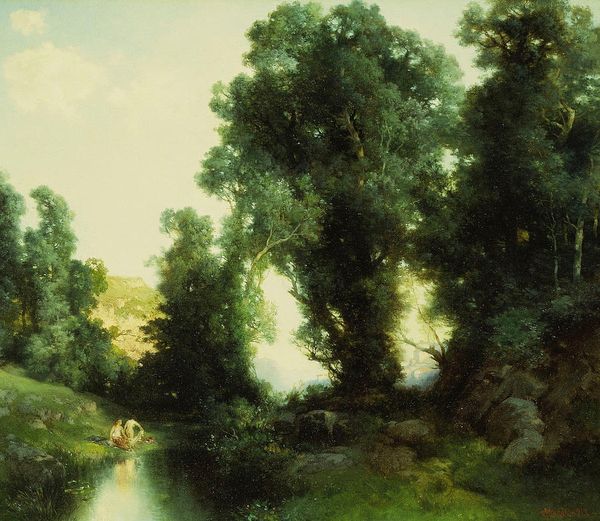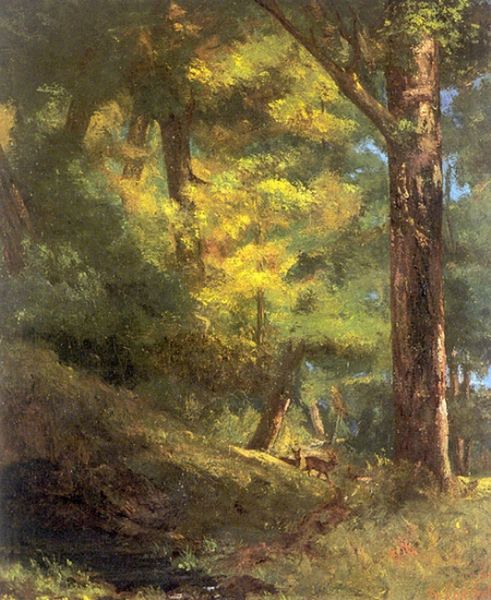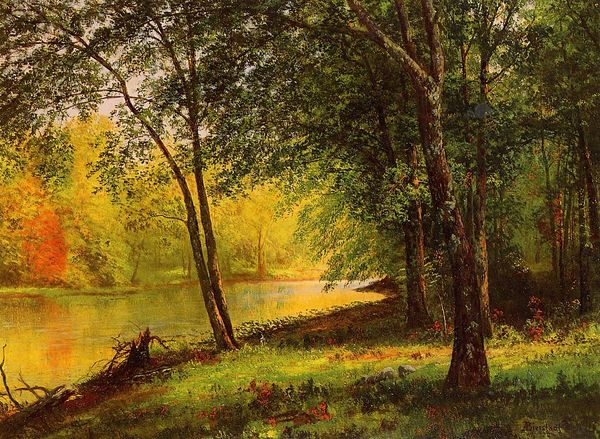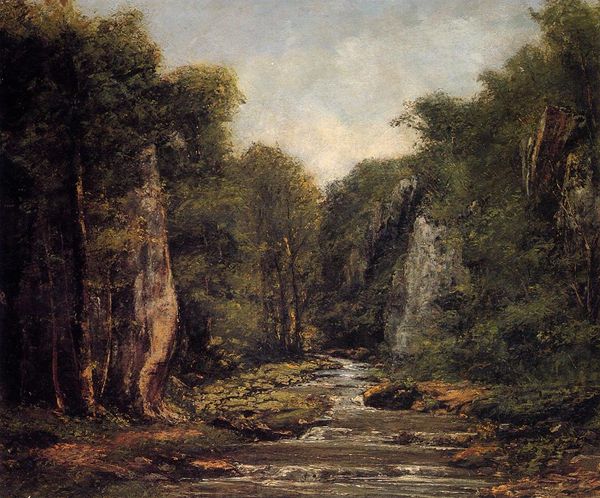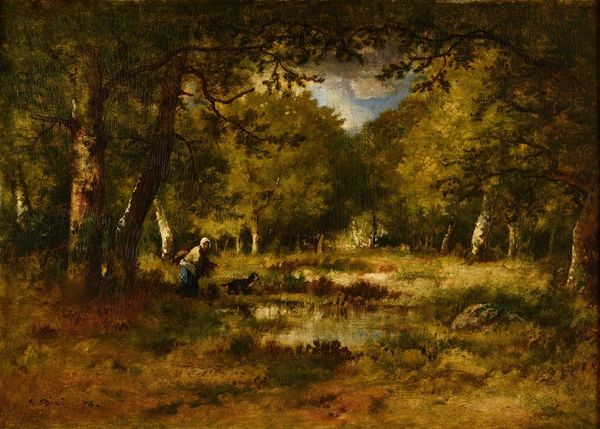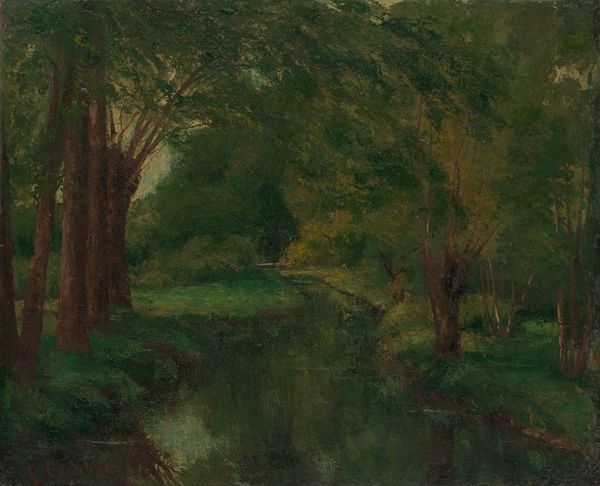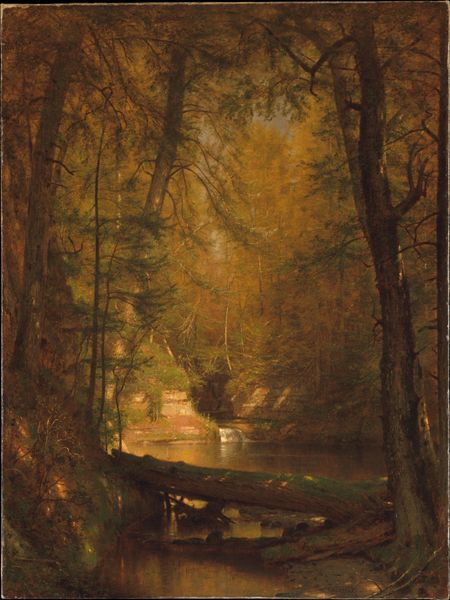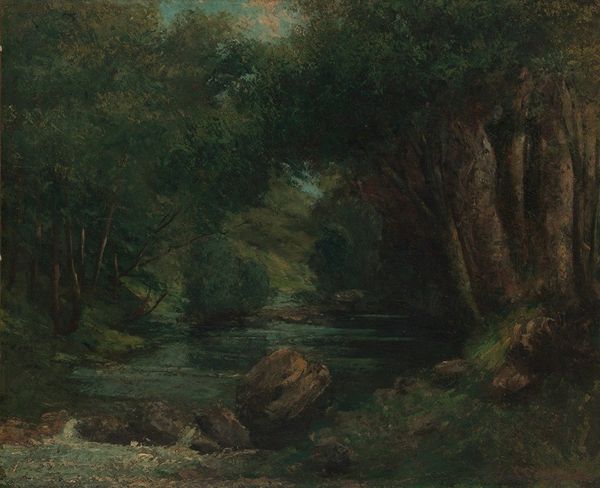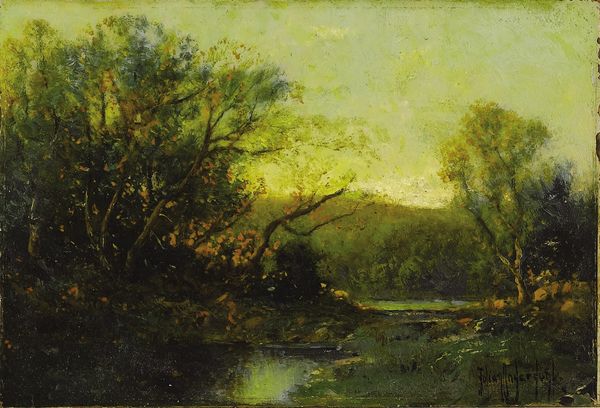
Copyright: Public domain
Curator: Thomas Hill's "Angler in a Forest Interior," painted in 1874, is a prime example of American Romanticism, isn't it? The scene practically vibrates with light and shadow. Editor: Yes, the light! My initial reaction is its shimmering effect. It feels... optimistic, even idyllic. Though, seeing the small scale of the human figure dwarfed by the imposing trees, it also communicates our humble position in nature. Is there something inherently optimistic about depicting manual labour and consumption? Curator: The way Hill manipulates perspective to draw the eye back into the depths of the forest, that alone makes the artwork for me. He understood spatial recession so well. Note how the darker trees in the foreground frame the light-drenched glade behind. In semiotic terms, the play between the known dark and imagined lightness of the interior. Editor: What strikes me equally is the tangible rendering of those trees. I find myself thinking about how those strokes of oil paint would feel if one were to run their hands along the canvas. Each leaf painstakingly crafted, the density of labor is really felt here. One needs to consider what kind of brushes would deliver such results. It reminds me how crucial tools and processes are to how landscapes were produced and then consumed as products of visuality. Curator: You've focused on texture, which, agreed, the materiality is very appealing. But think too, of how he deploys light to suggest form, and how form echoes light—how these elements together create the composition's visual architecture. Do you get a sense of depth—how his artistic gestures lead our eyes to wander along a definite path in the forest—like it's a painting of time rather than of static space? Editor: To me, I think about Hill sourcing his oil paint; I can't look at landscape paintings without also contemplating ecological and resource contexts. This scene makes one ask whether we should question its message regarding exploitation? It would be important to know where exactly it was created—was it, or the materials that composed it—part of something violently taken from a specific territory? The idea of consumption—the materiality is essential for thinking about these power structures in a social, environmental manner. Curator: Perhaps so. Though even when divorced from social implications, Hill's piece stands strongly because of the artist's vision. Hill offers us more than just a mimetic reflection of nature, doesn't he? His "Angler" makes it hard not to reflect on the sublime. Editor: It seems this artwork speaks volumes about human ambition and the exploitation that went with our endeavors to turn that into "art," one might say. It leaves much to think about.
Comments
No comments
Be the first to comment and join the conversation on the ultimate creative platform.
